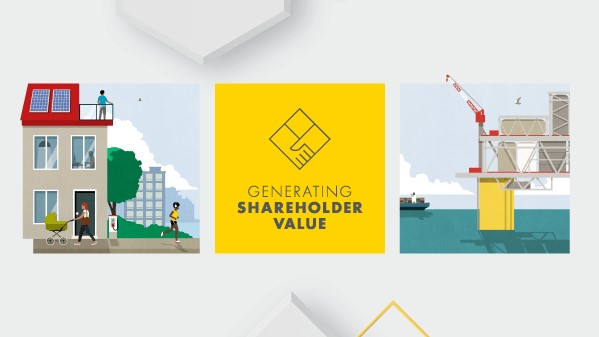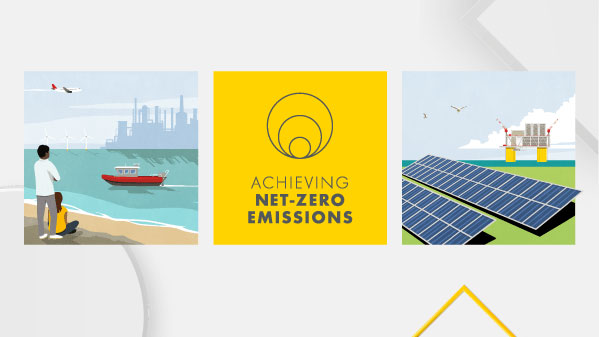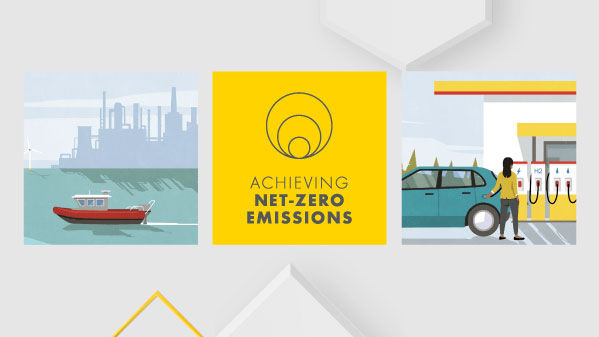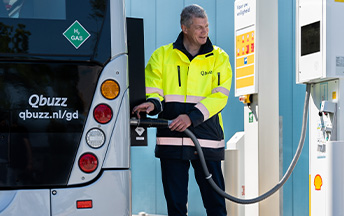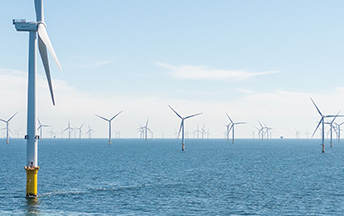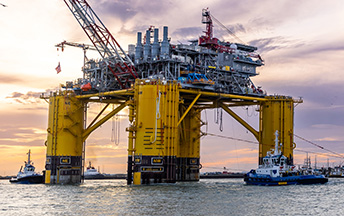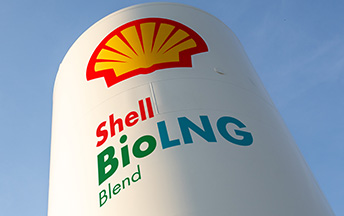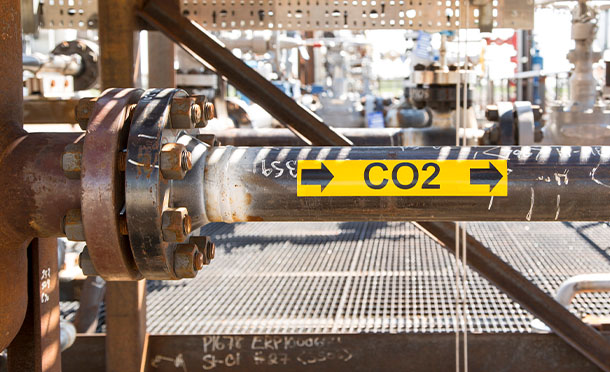Net carbon intensity
We use net carbon intensity [A] to show our progress in changing the mix of energy products we sell to customers. Net carbon intensity measures emissions associated with each unit of energy we sell. It reflects changes in sales of oil and gas products, and changes in sales of low- and zero-carbon products and services -- such as biofuels, hydrogen and renewable electricity.
Net carbon intensity measures the transformation that is happening in our portfolio as we implement our energy transition strategy. Achieving net-zero emissions by 2050 is the same as achieving 100% reduction in net carbon intensity.
Unlike Scope 1 and 2 emissions, reducing the net carbon intensity of the products we sell requires action by both Shell and our customers, with the support of governments and policymakers to create the right conditions for change.
[A] Shell’s net carbon intensity is the average intensity, weighted by sales volume, of the energy products sold by Shell. It is tracked, measured and reported using our Net Carbon Footprint (NCF) methodology
In focus Aligning our targets with Paris
Shell's target is to become a net-zero emissions energy business by 2050. We also have short-, medium- and long-term targets to reduce our carbon intensity, measured using our net carbon intensity metric. We believe these targets are aligned with a 1.5°C pathway derived from the scenarios used in the IPCC Special Report on Global Warming of 1.5°C (SR 1.5), most of which show the global energy system reaching net zero between 2040 and 2060.
There is no established standard for aligning an energy supplier’s decarbonisation targets with the temperature limit goal of the Paris Agreement. In the absence of a broadly accepted standard, we have developed our own approach for demonstrating Paris alignment by setting carbon intensity targets within a pathway derived from the IPCC SR 1.5 scenarios. This pathway is aligned with the more ambitious temperature goal of the Paris Agreement to limit global average temperature rise to 1.5°C above pre-industrial levels by 2100.
When constructing the pathway, we started by filtering out certain scenarios to ensure that Shell’s targets are aligned with earlier action and low-overshoot scenarios. Overshoot refers to the extent to which a scenario exceeds an emissions budget and subsequently relies on sinks to compensate for the excess emissions. Next, we calculated the carbon intensity (grammes of CO2/MJ of energy) for each of the remaining scenarios by dividing net emissions by total final energy consumption, with electricity represented as a fossil fuel equivalent.
To set a starting point, we then indexed the resulting carbon intensities to a common value of 100 in 2016 to remove the impact of differences between Shell’s historical net carbon intensity and the intensities calculated from the IPCC scenarios. Finally, the pathway was constructed using the range of carbon intensity reductions over time. Outlying values at the top and bottom of the range were removed, which had the effect of narrowing the final pathway.
By using the 1.5°C pathway produced by this approach to set our targets, we aligned them with the necessary reduction in carbon intensity shown in the 1.5°C scenarios. This is illustrated in the table, which shows that our targets are positioned within the range of the 1.5°C pathway. The upper and lower limits represent the upper and lower boundaries of the 1.5°C pathway derived using the approach described above.
|
2023 |
2024 |
2025 |
2030 |
2035 |
2050 |
|---|---|---|---|---|---|---|
IPCC-derived upper range |
-4% |
-5% |
-7% |
-15% |
-34% |
-68% |
IPCC-derived lower range |
-10% |
-13% |
-17% |
-36% |
-64% |
-104% |
Shell target range |
6-8% |
9-12% |
9-13% |
20% |
45% |
100% |
Until 2035, our calculation of the total net emissions of each scenario includes only the expected mitigation actions by Shell, such as carbon capture and storage and offsetting using natural sinks. Any use of offsets included in the carbon-neutral energy products we offer our customers is also part of our calculation. After that date, we include mitigation actions taken separately by our customers. This is because we expect that customers will need to take action to mitigate their emissions from the use of our products if society is to achieve the goals of the Paris Agreement.
To account for reductions in emissions across full energy value chains it is necessary to build new protocols to include mitigation actions by both energy suppliers and users. Currently, energy suppliers report the Scope 3 emissions from the use of their products, which are equivalent to the Scope 1 emissions reported by the users of those products. However, when users of energy products mitigate their Scope 1 emissions by the use of carbon capture and storage or offsets there is no protocol for reflecting a corresponding reduction in the Scope 3 emissions reported by the energy supplier. We will continue to engage stakeholders on these carbon protocols and will seek to align with new frameworks as they evolve.
As an energy provider, Shell has set a target to reduce the net carbon intensity of the energy products it sells by 20% by 2030. We believe that this target is aligned with a 1.5°C pathway derived from the IPCC SR 1.5 scenarios. We also believe that the pace of change will vary around the world by region and by sector, taking into consideration the time needed for energy users to invest in large-scale equipment, and the energy infrastructure changes needed for Shell to deliver more low- and zero-carbon energy.

